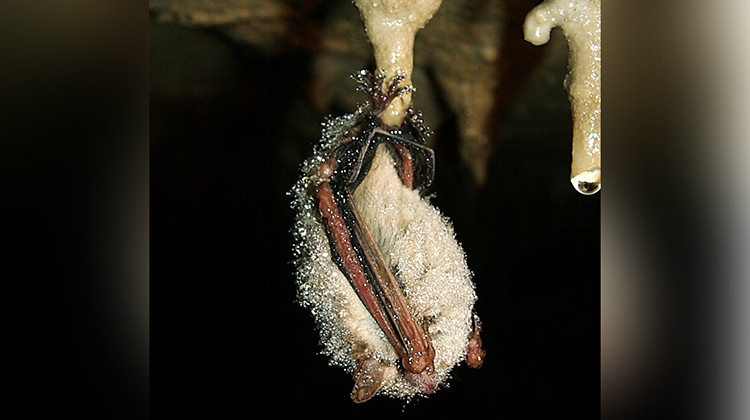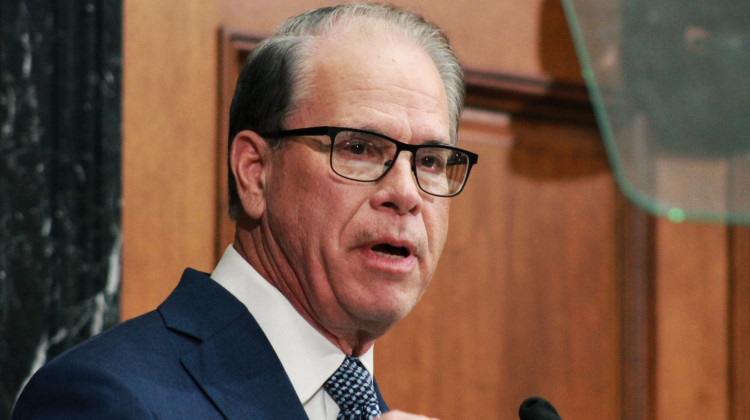Once common in Indiana, the tri-colored bat has been driven to near extinction by White-nose syndrome, a fungal disease. The U.S. Fish and Wildlife Service is proposing listing the tri-colored bat as a federally endangered species.
Since the disease was introduced into the U.S. in 2006, white-nose syndrome has caused the tri-colored bat population to drop by about 90 percent. The Fish and Wildlife Service is leading an effort to research the disease and test treatments.
The tri-colored bat is already listed as a state endangered species in Indiana. FWS wildlife biologist Andy King said listing the bat as a federally endangered species would offer protections regarding forest management where it roosts and developing land in its habitat.
“It also will help increase funding opportunities for the species and for conservation projects that would benefit the species," he said. "A federal listing of this species would also require federal agencies in Indiana or people that need a federal permit, for example, to consult with our agency."
Join the conversation and sign up for the Indiana Two-Way. Text "Indiana" to 73224. Your comments and questions in response to our weekly text help us find the answers you need on statewide issues.
King said human activities that weren’t such a threat to the bats before the population decline need a closer look. That includes habitat destruction from development, logging and wind turbines.
Fortunately, King said, wind companies can make sure turbines only turn at higher wind speeds.
“And that has been shown to dramatically reduce bat mortality," he said. "Not just of tri-coloreds — but pretty much across the board for most all bat species."
The Fish and Wildlife Service said tri-colored bats are not only an essential part of the ecosystem, they also contribute about $3 billion a year in pest control and pollination for agriculture in the U.S.
King said people can help the tri-colored bat by avoiding parts of caves with roosting bats and decontaminating any clothing and gear that you take into a cave.
He also suggests reducing pesticide use in your yard and leaving bats in barns and other outdoor structures alone as long as they're not causing harm.
The public has 60 days to comment on the listing proposal. Once the comment period is over, the Fish and Wildlife Service will have 12 months to decide whether or not to list the bat as endangered.
Contact reporter Rebecca Thiele at rthiele@iu.edu or follow her on Twitter at @beckythiele.
9(MDAyMzk1MzA4MDE2MjY3OTY1MjM5ZDJjYQ000))
 DONATE
DONATE







 Support WFYI. We can't do it without you.
Support WFYI. We can't do it without you.